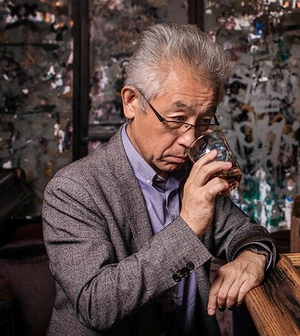New Delhi: When Hollywood star Bill Murray put Suntory on the map of the world’s imagination with Sofia Coppola’s critically acclaimed 2003 film, ‘Lost in Translation’, Japanese whisky was having a bad time. So much so, that by 2008, Japanese whisky consumption was down to just 20 per cent of the 1983 levels.
It was also in 2003 that Suntory’s Yamazaki 18 Year Old became the first Japanese whisky to win a gold medal at the International Spirits Challenge. Since then, there’s been no looking back for a whisky category that officially came into its own only in 1923 with the opening of the first of Yamazaki’s two distilleries.
Another Japanese whisky from Suntory, Hibiki, and the Asahi Group’s Nikka Yoichi, have together with Yamazaki not only lifted the global image of the category since the time Bill Murray was shooting for ‘Lost in Translation’, but also made them prized acquisitions for collectors around the world.
In early 2020, according to Wikipedia, Suntory raffled off 100 bottles of the Yamazaki 55-year-old in Japan for $20,700 each. One of those bottles sold for about $800,000 at a Hong Kong auction in August of that year.
Shinji Fukuyo, Suntory’s Chief Blender since 2009, wears these laurels lightly.
A familiar face in India — he first came here 25 years ago — Shinji San, who joined Suntory straight out of university in 1984, was in New Delhi after visiting the distillery that produces Oaksmith, an “international blended whisky” launched in 2019 by Suntory Global Spirits for the Indian market.
Explaining why the market for Japanese whiskies has boomed since 2008, Shinji San said a lot had to do with the Highball craze that Japanese bartenders were able to create around whiskies.
The Highball is a cocktail that overturns the age-old principle of drinking Scotch — either neat or with a splash of water at (Scotland’s) room temperature — and it is closer to how Indians have been imbibing the spirit since the days of the British Raj.
Today, the trend has become so big that you can even buy pre-mixed Highball cocktails in cans in Japanese supermarkets. The Highball craze, however, is not the only reason why Japanese whiskies are gaining an international following. They are also lighter and are regarded as a “gentle” accompaniment to a meal (especially when mixed with soda).
In an interview with ‘Tatler’ last year to coincide with the Yamazaki centenary, Shinji San said: “The Japanese learned to make whisky from the Scottish almost a hundred years ago. The Scottish style is more smoky and peaty, which the Japanese were not accustomed to. Japanese cuisine is light and simple, so a more gentle spirit was preferred.”
What is Shinji San’s role as a blender when there’s only one Yamazaki distillery (unlike, say, the Johnnie Walker, which is said to be a blend of 60-odd different single malts, each adding a distinctive characteristic to the blend)?
The master blender said each year he balances different expressions of the Yamazaki that are custom produced according to his requirements. Each expression owes its uniqueness either to the origin of the cask where it has been matured, or its taste profile conditioned by the specificities of the water or malt used.
It is this understanding of how to cater to the local palate that Shinji San brings to the table when he puts together the Oaksmith blend — a unique combination of a selection of Scottish single malts and Kentucky Bourbons. What sets it apart, to quote Shinji San, is “Japanese craftsmanship”.
Indians, according to Shinji San, like their beloved whiskies to be smooth, with an aroma that lingers, and they also would like to get a “kick” from what they imbibe. He hopes he has been able to pack their qualities into Oaksmith.
We asked him if we could compare it with the original Maruti Suzuki and he answered with a broad smile: “It is all about Japanese craftsmanship.”
Being an old India hand, what is Shinji San’s view of the new Indian consumers of alcoholic beverages. “They are going up the pricing ladder as they are happy to trade up for better quality,” he said. And in this quest for quality, they are discovering the joys of Japanese whiskies.
–IANS


Comments are closed.